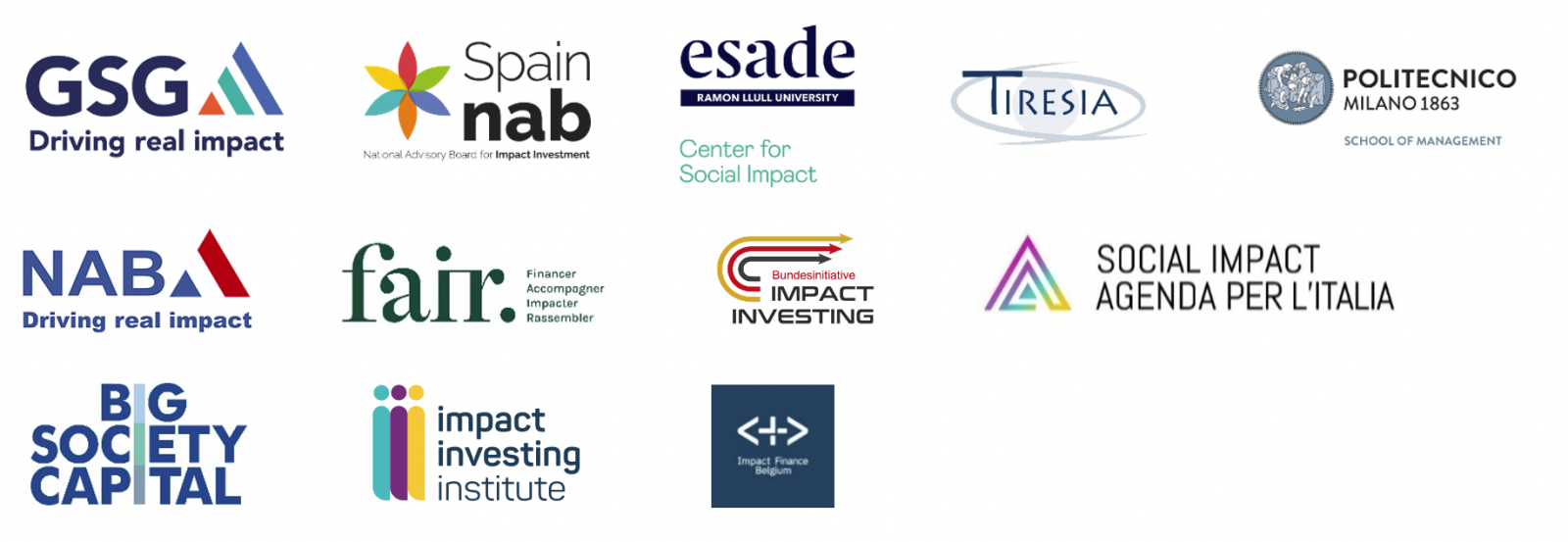Voilà: impact revealed!
Capturing the broadest addressable universe for impact investing

In March 2022, the Impact Investing Institute published the first estimate of the impact investing market in the UK (for 2020). Working closely with our research partners EY, we sized the market at £58 billion and identified an additional £53 billion of “impact-aligned” investments.
However, only £7.9 billion of the UK’s market made it into the EVPA’s excellent inaugural European market size estimate.
Why the difference?
There were three reasons: datasets and timing; fundamental methodological differences on survey use and impact definition; and the distinction of the impact-aligned category itself.
Timing is everything
The Institute collected data from 2020, but the focus of the European market sizing was the 2021 market. As a result, we decided that using a 2021 dataset from Big Society Capital (the UK’s social impact investing wholesaler) would be better than the older, broader data from the Impact Investing Institute.
Counting the un-surveyed
More fundamentally, the exercise that the Institute undertook had a different philosophy, both about getting beyond those surveyed and into the broader capital markets and, additionally, around impact investing definitions.
The first distinction is a common problem of research pieces. If your aspiration is to sum up the size of a sector, how do you deal with the research reality that only a small sub-category of that sector will fill in a detailed survey? In smaller impact investing markets, the survey covered most impact investors, while larger markets required extra efforts to ensure proper coverage. The Institute used a survey as a part of its methodology combined with other research pieces to describe a bigger picture. We felt that if we had just used the survey, we would have under-counted and under-described the scale and importance of the UK impact investing market.
Subtracting additionality
The second is an issue that bedevils the impact investing market: nuance on definition. The Institute used the Global Impact Investing Network’s (GIIN) definition of impact investing for its report. This includes intentionality, measurement and financial return – but does not specify additionality.
“Impact investment is investment made with the intention to generate positive, measurable social and environmental impact alongside a financial return.”
Source: GIIN
Our £58 billion, therefore, went broader than the European approach. Removing additionality as a definitional hygiene factor enabled us to include impact investing in listed markets as well as private markets. The European effort, due to a lack of widely acknowledged set of criteria to assess impact investing in public markets and due to its commitment to measure additionality, was exclusively focused on private markets.
While we understand the European position on additionality, we feel differently about its role.
Additionality as a philosophical framing is vital. The whole purpose of impact investing is that through doing things differently with capital we expect more positive results.
However, when applying additionality as a practical investment test, it is often translated as “incremental capital allocation,” and thus rules out public markets and therefore most of the world’s investment activity.
Do we really think that impact can’t play a role in IPOs, collaborative stewardship, ongoing support to assets, policy advocacy and cross-industry engagement?
At the Institute we believe impact can and must play a role in public markets. That doesn’t mean everything calling itself “impact” in public markets is, indeed, impact. But just because terminology is misappropriated by some, doesn’t mean that good practitioners driving quality work in public markets, should be excluded from the impact investing world.
For us at the Institute, the question is not if impact investing can occur in public markets, but rather how we can spot high quality impact investing in public markets and distinguish it from the “pretenders.”
Identifying areas of opportunity
The final key distinction between the Institute’s effort and how European colleagues sized impact investing was a concept we outlined as “impact aligned.”
This “impact aligned” category looked at areas of active commercial investment into real economy opportunities, including social housing and green infrastructure. The report argued that ultimately adding measurement and intentionality to both those areas – the £41 billion of UK housing association debt, and £12 billion of green infrastructure – would see them come into the purview of the GIIN definition and, through better ownership, accelerate better outcomes for people and planet.
Sizing the 2023 impact investing market
The Institute is just kicking off its second run at sizing the UK impact investing market, which will be published in June 2024. The work, funded by the UK’s Department for Culture, Media and Sport (DCMS), and delivered with research partners Social Finance, will again wrestle with the methodological complexities outlined above.
Having learned valuable lessons, our next market sizing exercise will:
- Seek to get a bigger picture of the addressable market than that yielded by a survey.
- Size the public markets activity of impact investing as well as the private markets.
- Further investigate the impact-aligned concept, seeking to identify those spaces most apt for being brought into the impact investing sphere.
But this time, there will be one crucial difference. The timing allows us to work closely with European partners, to ensure that our data speaks to each other, and to continue to advocate, debate and exchange on how best to grow the market and create the better future we’re all keen to accelerate.
Partners


